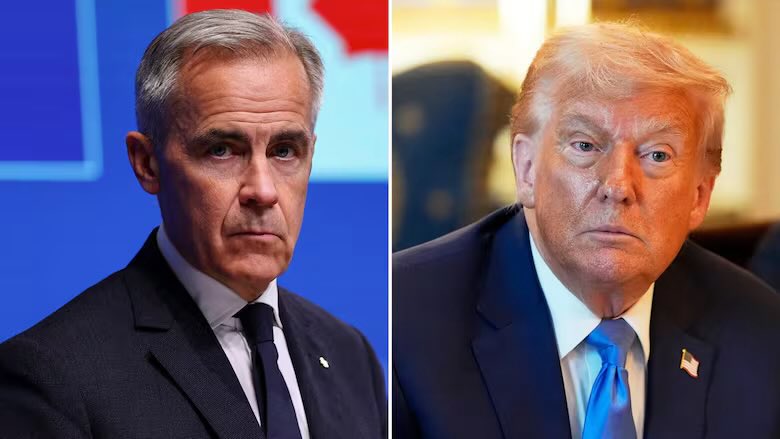How Trump’s New Tariff Strategy Forced Canada to Recalibrate Its US Trade Approach Under USMCA
Canadian Prime Minister Mark Carney on Friday announced the removal of retaliatory tariffs on U.S. goods covered under the United States–Mexico–Canada Agreement (USMCA), following a phone call with U.S. President Donald Trump.
 |
| Image Source: MarkNixon24 on X |
Beginning September 1, Canada will eliminate tariffs on American goods previously subject to retaliatory duties. “Canada and the United States have reestablished free trade for the vast majority of our goods,” Carney said in a press briefing.
“This is a strategic realignment to reflect ongoing discussions toward a broader trade framework.”
LIVE: Update on Canada-U.S. trade • EN DIRECT : Mise à jour sur le commerce Canada-États-Unis https://t.co/gAgEzWJCss
— Mark Carney (@MarkJCarney) August 22, 2025
The decision comes after the Trump administration reaffirmed exemptions for USMCA-covered items while raising duties on other Canadian imports.
Prime Minister Carney emphasised that Canada will maintain tariffs on steel, aluminium, and automotive products, pending further negotiations.
“Canada currently has the best trade deal with the United States. And while it’s different from what we had before, it's still better than that of any other country,” Carney said.
He described the USMCA as a “unique advantage” for Canadian exporters, particularly in a global climate where the U.S. is tightening market access for other nations.
Today, I had a productive meeting with Secretary @SecRubio in Washington. We discussed collaboration on shared priorities, including: supporting Ukraine, advancing Arctic security, addressing the security crisis in Haiti and continuing to provide humanitarian aid in Gaza.… pic.twitter.com/uUn67QvsXL
— Anita Anand (@AnitaAnandMP) August 21, 2025
More than 85% of Canada–U.S. bilateral trade remains tariff-free under the USMCA, with Canadian and Mexican firms continuing to receive preferential access to the American market, according to the Associated Press. The trade pact is scheduled for a formal review in 2026.
The retaliatory tariffs being lifted were originally imposed under former Prime Minister Justin Trudeau in response to U.S. steel and aluminium duties.
Ottawa’s decision to rescind them follows the Biden-to-Trump policy transition, under which the White House has chosen to retain exemptions for USMCA-aligned goods.
However, tensions remain over non-USMCA sectors. On Thursday, President Trump signed an executive order raising tariffs on Canadian goods not covered under the trade pact from 25% to 35%, while also approving a 40% transshipment levy to prevent circumvention via third countries.
US Commerce Secretary Howard Lutnick signalled potential changes ahead, stating, “I think the president is absolutely going to renegotiate the USMCA.”
Since March, several U.S. tariffs targeting Canadian exports have taken effect:
-
25% on all Canadian goods excluding potash and energy
-
10% on energy products, including potash
-
50% on steel and aluminium imports
-
25% on automotive goods
These duties remain in place outside the USMCA framework and continue to impact Canadian industries.
Trade analysts have noted that both Canada and Mexico rely heavily on the U.S. for export markets. More than 75% of Canadian exports and 80% of Mexican exports are directed to the United States.
Any disruption or renegotiation of USMCA terms could have significant implications for supply chains, tariffs, and cross-border investment.
With a formal review of the USMCA due in 2026, both Ottawa and Mexico City are expected to prioritise the stability of the agreement amid wider U.S. trade recalibrations.
